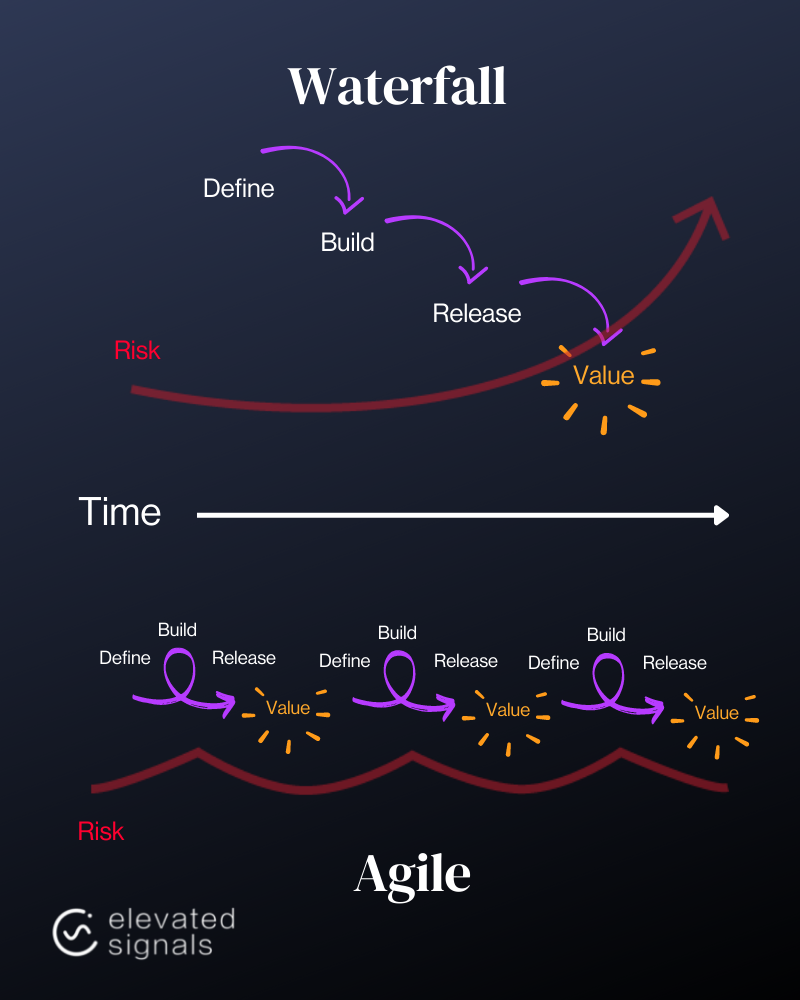Change is a constant for cannabis businesses, and changing software is a part of that equation. For cannabis companies, changing software typically involves the majority of staff, from Quality Assurance and Operations teams to Finance. The diversity in the roles and people can complicate communication and training, and pose challenges to software implementation.
Because of this, a smooth adoption is critical for the success of the implementation. Without it, you can lose out on the value of the software that could be helping move your business forward.
Change management strategy is a critical concept that can help your team adopt any new technology. It starts at the beginning of your software buying process and continues well after implementation to track platform use among your team. Applying change management will help your team adjust to the changes in their day-to-day work and increase your chances of successful implementation.
Who are we? As a cannabis software provider, we’ve helped countless cannabis producers with the change management process and have a few tips up our sleeves.
What is change management?
Change management is the organized process of leading people through a change in a business.
Suppose your business is implementing a new piece of software, for example. You will likely put together a list of tasks, responsibilities and deadlines to go from your current state to your future state. You pencil in staff training and communicate with business stakeholders. You might also include the change's quality aspects, such as completing the change control process and updating controlled documents.
We've just described a combination of change management and project management. Both are critical in moving a project along. However, it's essential to identify the difference.
The technical side of the change, task management, is the project management part of the change.
On the people side of the change, communication and training are the change management part.
Why is the change management process important for software implementation?
If you're using project management solely for small operational changes, you might be able to get away with it since there may be a minor impact on the day-to-day operations of the staff.
But if you want to bring in new software that will impact all operations and quality teams across many different job functions? That’s more challenging to manage.
🌿
Still not sure if you need cannabis software? Read our Buyer’s Guide to see if it’s a good fit.
On top of that, if significant finances are required to bring forth a change, such as new software, you bet executive leadership will be involved.
A successful implementation depends on a change management strategy, so it should be top of mind when considering new cannabis software.
We’ve helped many cannabis businesses with their change management process, so we wanted to share some key considerations before, during and after implementing the change.
5 change management best practices
1. Identify your pain points 📌
If your cannabis business is looking for new software, you have identified a problem to which you feel software can provide a solution. You need to map out your problems, who is affected, and understand how you aim to improve them.
How does this relate to change management strategies? Change management is about changing people's attitudes and behaviours within your organization. You need a compelling reason to make a change and bonus points if this change makes people’s jobs easier.
Once you’ve identified your pain points, quantify them if possible. Here are some examples of common pain points:
- How long does it take to compile a batch record
- The number of errors per X time is attributed to poor Good Documentation Practices (GDP) and lost records
- The time it takes to submit a CTS report
- Inaccurate inventory count leading to poor forecasting
Now you've identified and quantified your problems, you're in a better position to start looking for a software solution. Ultimately, you know what you need, and when speaking with software providers, you can keep an eye out for features that help alleviate these pre-determined pain points.
🌿 Looking for more information about how to identify pain points and purchase cannabis manufacturing software? Get your free guide.
Identifying and quantifying the pain points will document the “Why” and appeals to the interest of leadership and impacted departments within your organization. Without organizational buy-in, getting executive approval for the change will be tough, and it will be even more challenging when it comes to implementation and adoption. This is why it’s the first step in your change management strategy.
Focus on communicating the “Why.” Explain what your pain points are and the risks associated with not changing. Talk to stakeholders about solutions you’re considering to fix the problems and get their input.
When you choose software, re-iterate how it aligns with solving your pain points to the team who will be using the software.
If you can identify the problem and how much time and money is going into it, you can start setting Key Performance Indicators (KPIs). KPIs are great for helping you keep your goals on track and measure your progress and the success of the implementation.
You might have already set KPIs for your business. Perhaps your pain points are getting in the way of achieving these KPIs for production output, purchase order size or revenue. Cannabis software can remove those pain points and help reach those KPIs. Keep track of those as well!
🌿 Change management example: Pure Sunfarms identified their paper-based system as a pain point preventing them from facilitating future growth, which drove them to seek a digital-first, data-driven solution.
2. Engaging stakeholders 🤝
Think about who you should involve during software procurement. It’s best to involve these individuals throughout the change management strategy, from preparation → to implementation → to follow through.
Tip: Engaging stakeholders such as executives, middle management, and on-the-floor staff early in the process can help you better understand your pain points.
Stakeholders that are a part of the decision-making process consist of two key groups within your organization, (1) stakeholders and (2) purchasing committee.
Stakeholders are the key users of the technology. Think about who these pain-points impact. These departments and individual team members will use the software and go through changes in their daily job functions. For cannabis producers, the change management strategy should involve members of operations (processing, cultivation, packaging) and quality assurance teams.
An open line of communication with stakeholders who will be using the software is essential. Consider involving them in the change management strategy and speaking to your team about the problem, its impact on the business, and the solutions you're exploring. Talk to them about how the software solution you're considering can help make their jobs easier.
Be transparent about the change management strategy and procurement process. Allow the team to provide input and communicate updates about your progress.
Why is transparency part of a good change management strategy?
Adoption is one of the biggest challenges for businesses when implementing a change; transparency and consistent communication throughout the procurement process allow team members to be involved and feel like they are part of the decision-making process.
Communicating with executives is equally important. You want to emphasize the “Why” and keep them updated on the progress of the conversations with different vendors. When the time comes to engage them in the procurement conversation, they will already understand the company's issues, and you've laid out the value of the software and the change management strategies.
You will need to identify who will be on your purchasing committee. The committee might include budget holders such as CEOs, CFOs, and board members. You will need buy-in from those who control the budget and ensure they understand that new technology is necessary. Present the pain points you identified and the need for technology solutions. Having the executive team understand the value of the technology early in the process will prevent decision-making and implementation delays.
3. Assembling an execution team 👩💻
When procuring and implementing manufacturing software in a cannabis facility, you need to involve people with a strong understanding of operations and quality within your organization. The team might consist of a single individual (these people tend to be unicorns) or be composed of at least one person from Quality and one person from Operations who have this knowledge.
Identify who within each department you will train to use the software. These will be the people responsible for championing the implementation, training other staff and driving the adoption of the software at the company.
The most effective champions have excellent communication skills. They will be training staff, answering questions and receiving feedback to assess the success of the implementation.
🌿
Important: Ensure you're allocating enough time and resources for implementation. Too often, we see an implementation team stretched too thin. This can lead to less than ideal software deployment.
If you're a cannabis producer, we know resources can be tight. This challenge doesn't mean you can't have a successful implementation. We've seen companies with limited resources implement manufacturing software effectively. The change management plan will help you allocate resources and ensure employees use time wisely to move the needle on implementation.
4. Creating a plan 🗒️
In a Prosci survey conducted on change management strategy, those who applied a structured approach were 33% more likely to experience good or excellent change management effectiveness than those without a plan.
Work with your software vendor, internal project managers and change management strategy team to understand the tasks and milestones for implementing the system. Integrate change management tasks (such as training and communication plans) in your project plan for better implementation outcomes.
Consider the needs of various stakeholders in your business. Will different departments have different requirements?
Here are things to consider when creating a change management strategy:
- When and how will information about the project be communicated to stakeholders?
- What quality documents need to be updated, created and implemented?
- Who from your execution team will be trained by the software provider, and when?
- What staff will you train on the software, and when?
- What will you be training staff depending on their job duties?
- Who from your organization will be responsible for answering staff questions?
Tip: Training should be tailored based on which functions the software team members will use. There is no need for initial staff training to include the full software.
A good software provider will guide you through a stepwise fashion of software deployment and help you with your change management strategy.
For example, Elevated Signals uses Agile methodology for implementation. It is an iterative, cyclic and collaborative process, meaning the software implementation happens incrementally. Unlike waterfall methodology, a sequential and linear process, agile allows customers to see value quicker, with less room for implementation error.
To start, you can add your milestones around the deployment plan provided by your software supplier to create a change management strategy.

5. Tracking success & unlocking value 💰
Congratulations, the software is implemented!
Hold up! Not so fast. You're not out of the woods yet.
You may have finished training, your employees might be comfortable using the software, and you’ve alleviated the pains you initially identified. Sounds great! But it’s important to set regular check-ins to see how the change management strategy is going.
As part of the change management strategy, you can incorporate feedback mechanisms for staff to comment on the success of the implementation. You can use surveys or focus groups to gather this information. Continue talking and updating your team, as it helps them feel more involved and less likely to resist the change. If you see that the change isn’t sticking over time, it may be time for a re-training.
Let's go back to your “why” remember we mentioned you should quantify your pain? This is an opportunity to quantify the improvement.
Quantified improvements are a great bonus to add to your communications plan. You can explain how you’re saving money to executives and team members. This data reinforces the organization’s decision to utilize this software. Demonstrating the system's success ensures leaders will see value in the cost. It is also an opportunity to show your team how their use of the software contributes to the company's success.
🌿
Change management example: How Rubicon Organics' new software enabled them to save 500k in personnel and release batches 600% faster than their previous paper-based system.
What else can a change management strategy help you achieve?
You can now assess whether you've unlocked future capabilities that your initial system prevented you from achieving. In our experience, after cannabis producers implement our cannabis manufacturing software, they gain access to a centralized source of accurate data. With that, they've gone on to track the Cost of Goods Sold (COGS), scheduling, data visualization and more!
Ultimately, you might implement the software to help you with an initial set of pain points, but don’t overlook how you can grow your company’s success by utilizing modern software.
We hope you found this blog valuable and that it has inspired you to use change management strategies during your next software implementation.




%20(1).png)
.png)
%202.png)

.png)


